Trevi Fountain
Trevi Fountain is an amazing monument of Baroque art, which ranks among the top popular attractions in Rome. The grandiose composition harmonizes with the architecture of the magnificent Palazzo Poli. The scale of the idea and its masterful realization, the amazing combination of living water and frozen stone create a unique aura in this place.
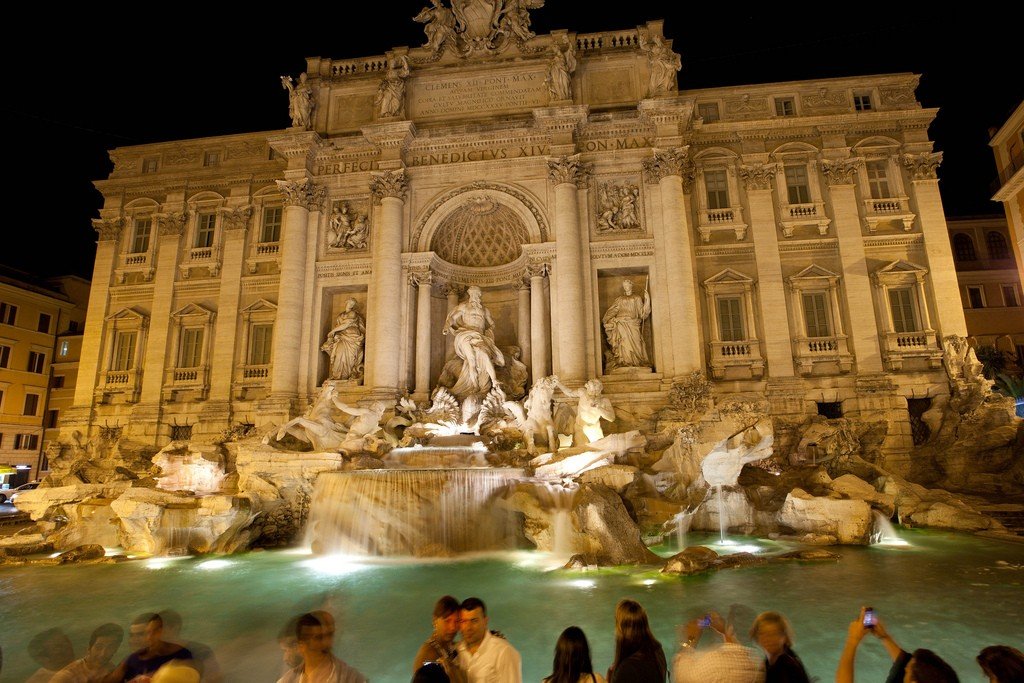







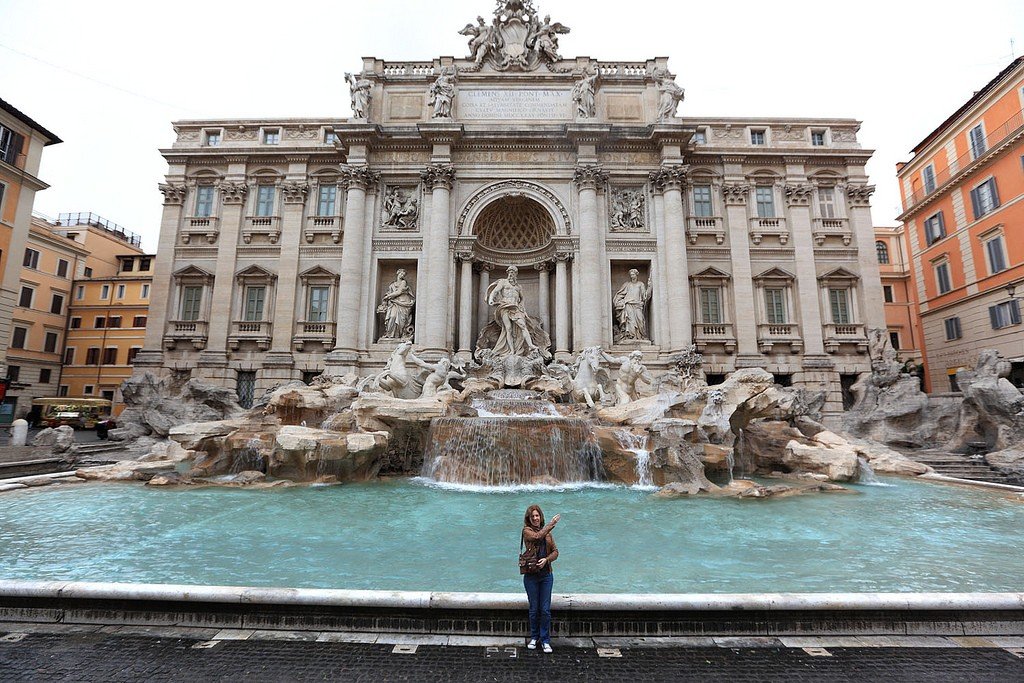
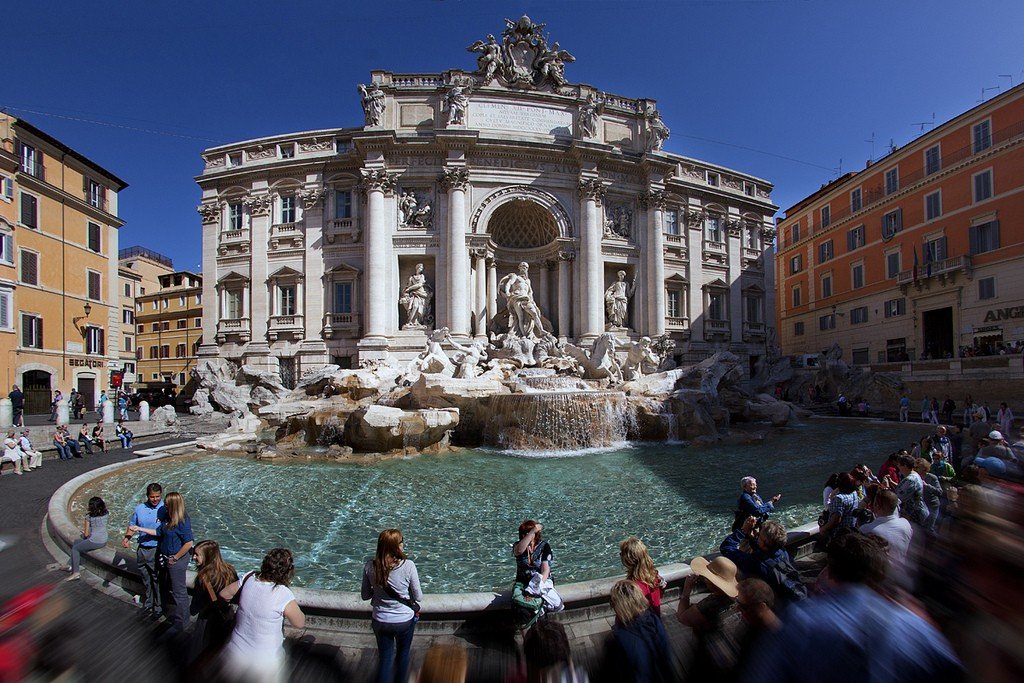
Video: Trevi Fountain
Contents- History of the erection
- Composition of the Trevi Fountain
- Interesting facts
- What a tourist should know
- How to get there
Erection History

.
Many are convinced that the idea of the fountain belongs to Pope Nicholas V, whose forehead was adorned with a tiara in the middle of the XV century. This is only partially true. The order given then to the architect Alberti, and was not realized.
To the practical realization of the idea Italians returned more than 200 years later. Pope Urban VIII decided to decorate the square in front of the Palazzo Poli and entrusted this task to the famous architect Lorenzo Bernini, who developed the original project. The death of the pontiff in 1644 caused a pause, the work resumed in 1700. It fell to his pupil Carlo Fontana to finalize the master’s ideas. The latter, following his mentor’s idea, enriched the sculptural group with the figures of Neptune and his servants. In 1714 the artist died, and the ensemble was left unfinished once again. Fortunately, not for long. Clement XII announced a competition among architects, in which 16 masters took part. The victory went to Nicolo Salvi, and the master brilliantly coped with a difficult task: he created a magnificent composition with many characters, harmoniously linking its style with the architectural features of the Palazzo Poli. Among the sculptors who built the Trevi Fountain, it would be fair to mention two people: Filippo della Valle and Pietro Bracci. It was they who executed most of the figures that make up the composition.
The realization of the grandiose plan took a long time – the monumental ensemble was built for 30 years, from 1732 to 1762.
.Composition of the Trevi Fountain
The Trevi Fountain is the largest on the Apennine Peninsula. It is about 50 meters wide and the main character, the majestic Neptune, reaches a height of 26 meters. The basis of the composition is the figure of the sea god appearing from the depths on a chariot in the form of a shell, in which are harnessed sea horses (hippocampi) and newts. Water flows beneath the feet of the heroes, its streams rushing down the stone steps and making noise, reminiscent of the sounds of the surf. It seems that Neptune is about to continue his journey through the foaming sea. In the niches on either side of the menacing husband are the figures of the Roman goddesses of Health (left) and Abundance (right). These statues are the first to greet tourists flocking to the square. A variety of allegorical figures and bas-reliefs adorn the composition.
.


Interesting Facts
Why is the fountain so named? Two versions seem to be the most plausible. According to the first, “trevi” is a corruption of the Latin “trivium”, “three paths”, and it is in this square that the three great Roman streets converge. The second is more romantic: the ensemble is named in honor of the beautiful Trivia. According to legend, this was the name of the girl who showed the Roman legionaries the way to the purest spring. Her figure can be found among the sculptures of the ensemble.
.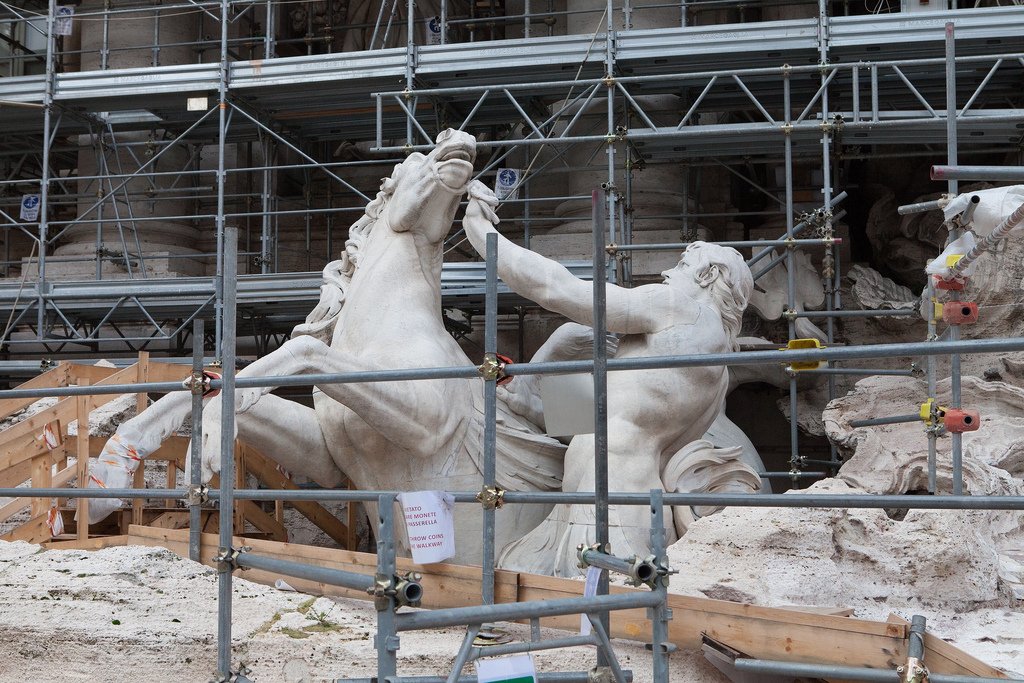
What a tourist should know
Many people ask what syllable should be stressed in the word “Trevi”? For a true Italian the answer can be only one – of course, on the first. Such a sign of respect for the masters of the city will be appreciated by temperamental Italians.
.
The fountain is available to tourists around the clock throughout the year completely free of charge. In the evening and at night, the original illumination gives a special flavor to this amazing place.
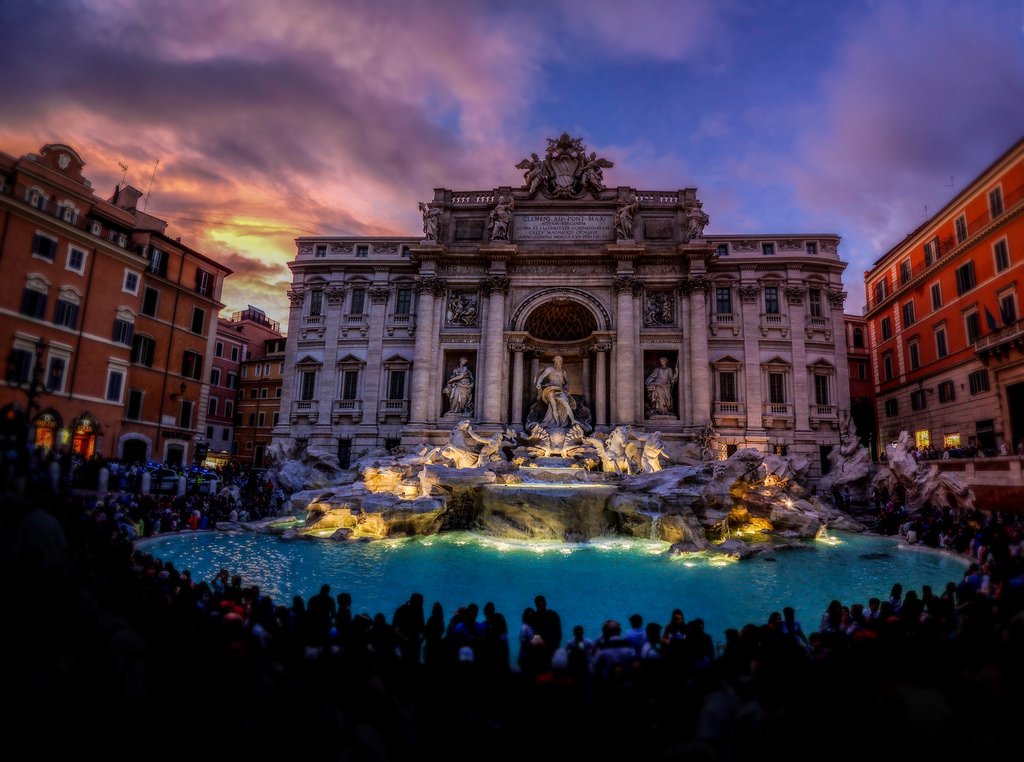
It’s never deserted here. But if you want a little more tranquility, it is better to come at dawn or late in the evening. However, if you find yourself in this place at sunset or even in the hot afternoon, the delight of the splendor of what you see, you will also be assured.
.
To avoid getting into an unpleasant situation, remember – swimming in the fountain or trying to get coins out of it is strictly forbidden. You will be fined a fairly large amount – a minimum of 200 euros. Do not eat or drink in the vicinity of the sculptures either.
.After admiring the Trevi Fountain, you can visit the Museum of Graphics and Design, which is located here – in the building of the Palazzo Poli. You can enjoy the view of the square and sculptures from several floors up.
.
Interesting for tourists and the Academy of St. Luke, the history of which dates back to the mid-16th century. It is located in the very nearby Palazzo Carpegna.
>How to get there
The fountain is located in the square of the same name (Piazzo di Trevi). The easiest way to get here is to take the metro. Choose line A and go to either Spagna or Barberini station. The next option is to walk. In the first case, take Via Vittoria, turn onto Via del Corso and then onto Via delle Muratte. From Barberini station take Via Tritone and then turn left onto Via Poli. A few steps and you will see the majestic and famous Trevi Fountain.
.